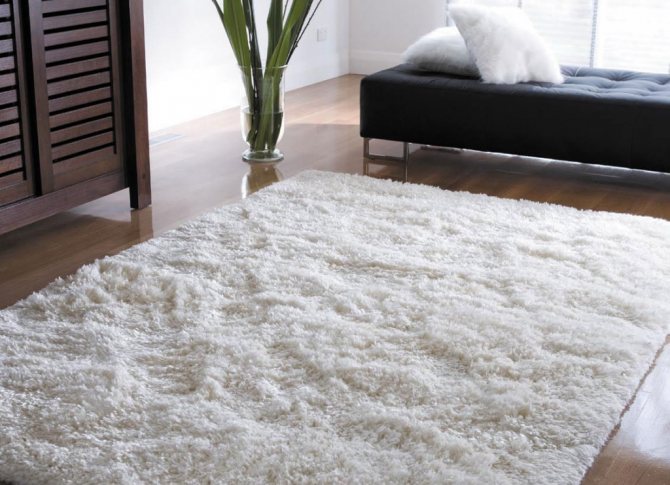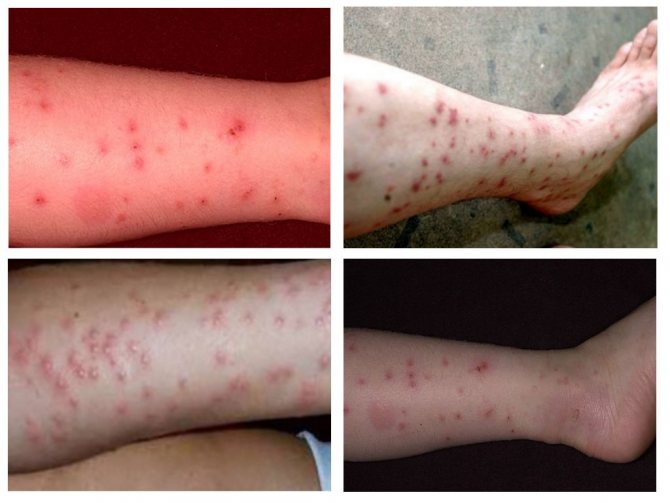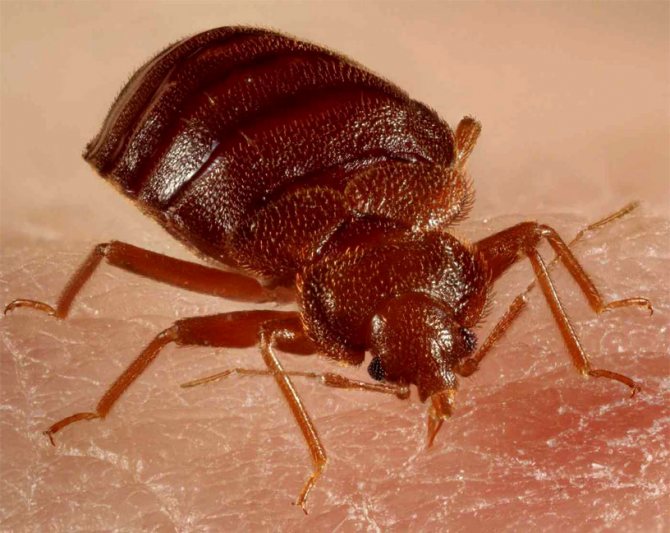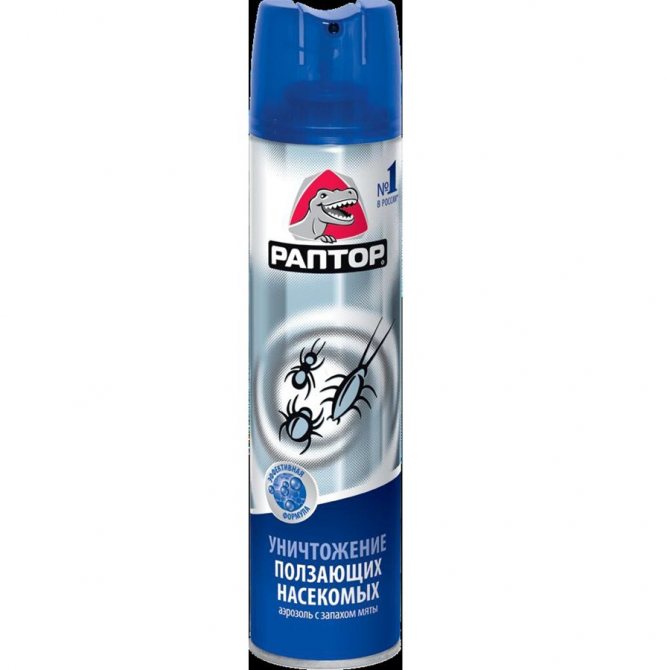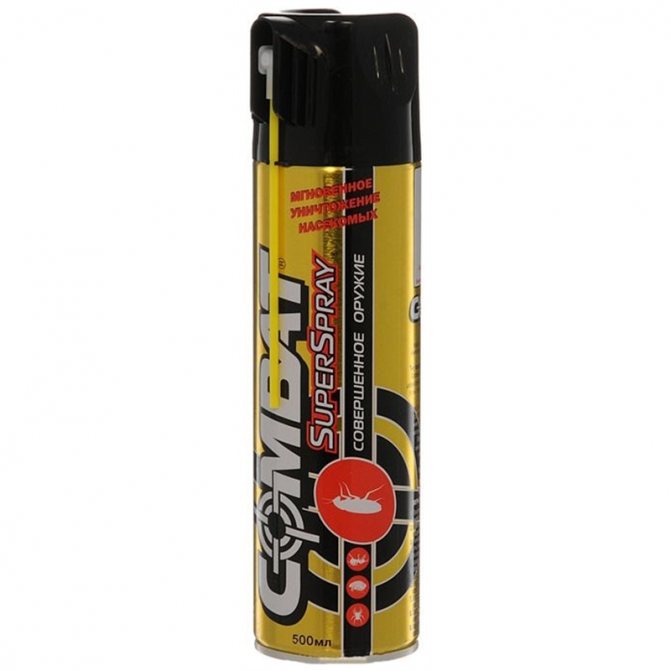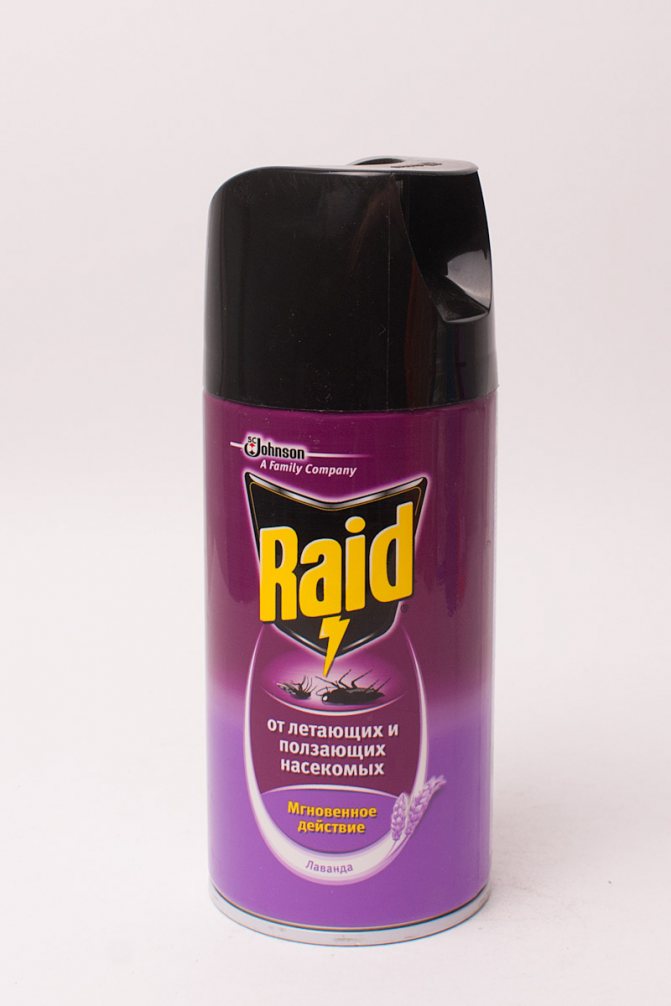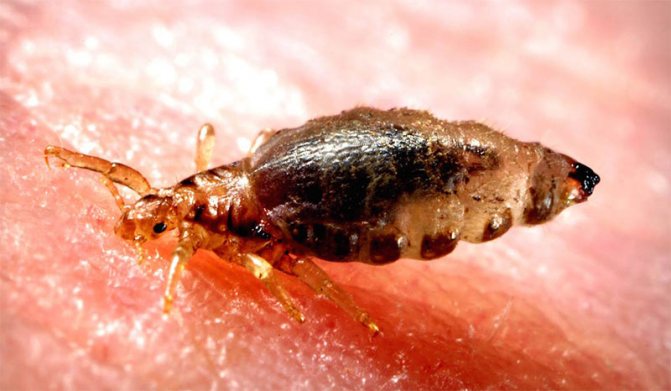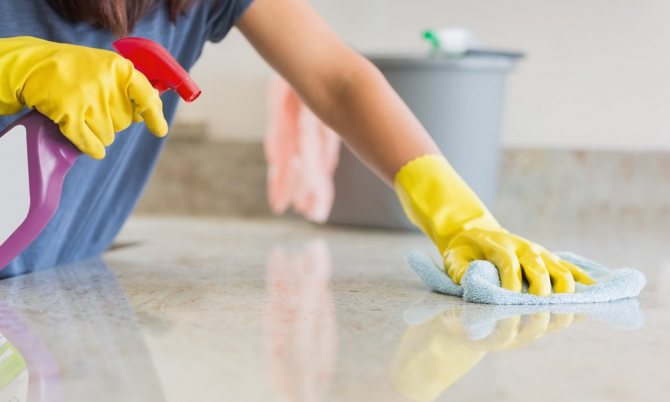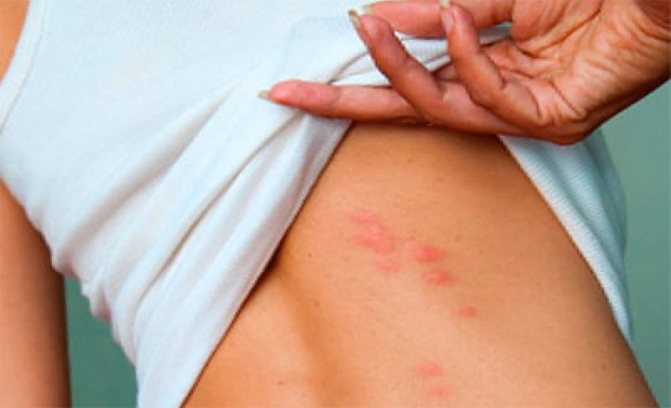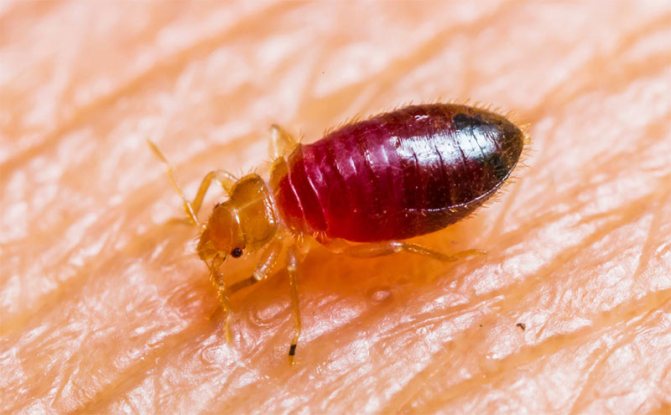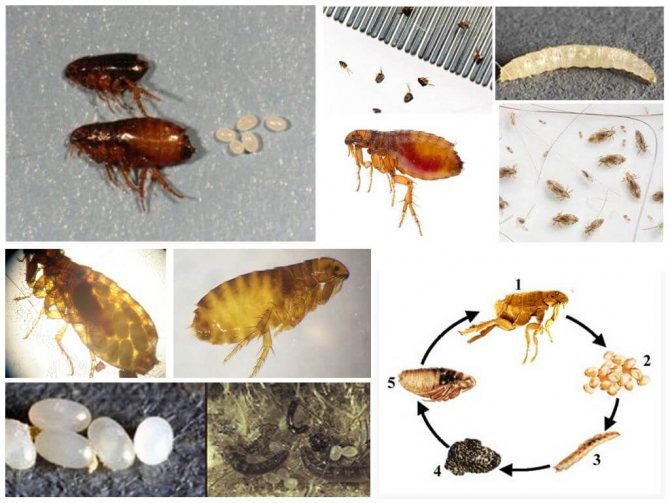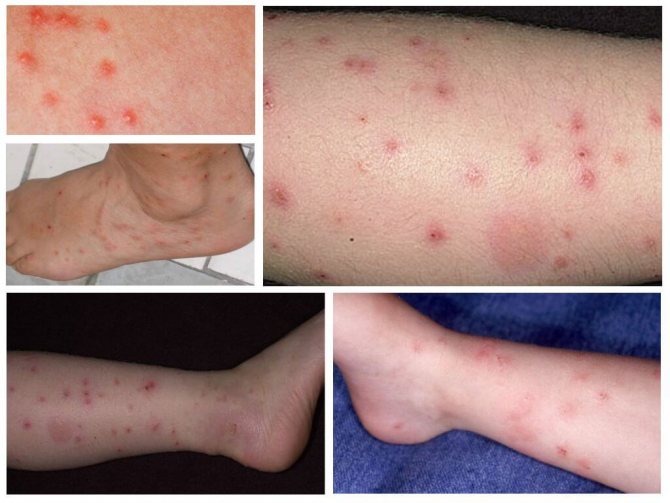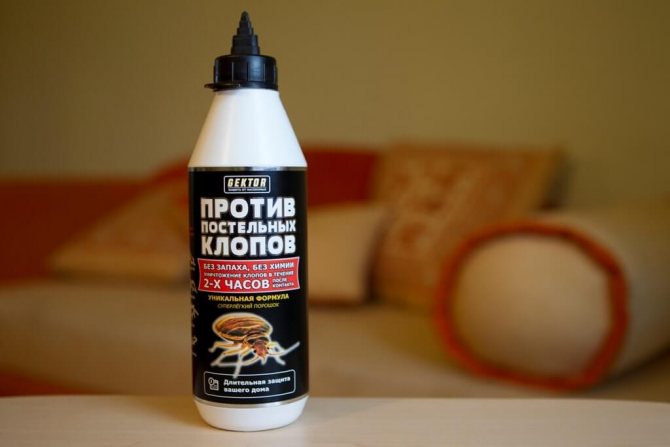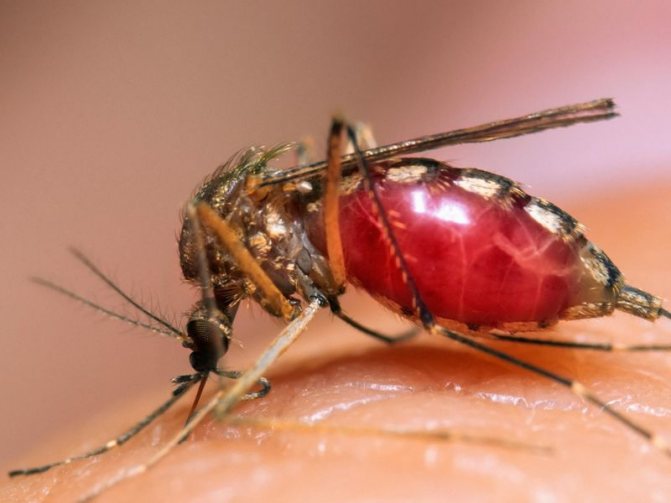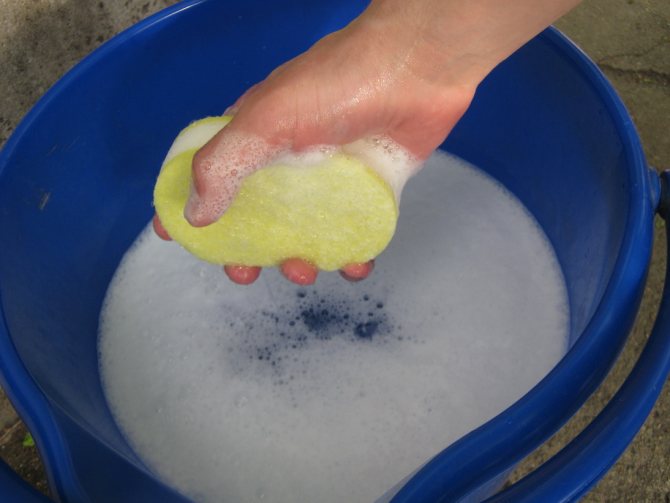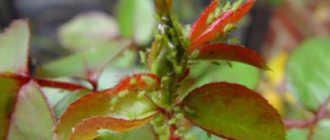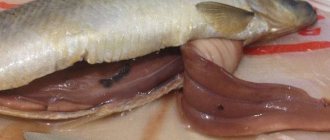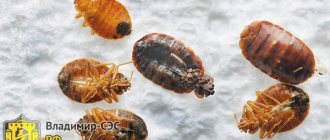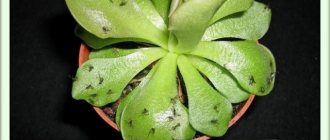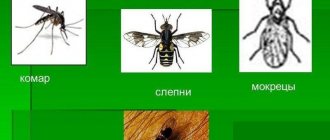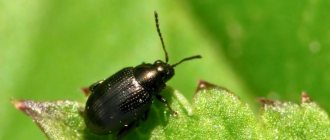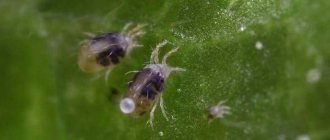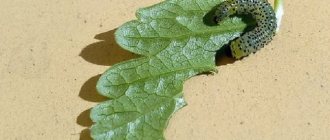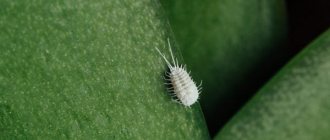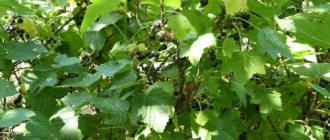Insects in bed can not only disrupt the healthy sleep of a person, but also cause the development of various diseases. They are small in size, lead a hidden lifestyle, preferably at night and easily adapt to any living conditions. All this complicates their detection at the initial stage. As you know, the sooner the problem is identified, the easier it is to deal with it. Often, parasites live near humans, which are the main source of food. Even following the rules of hygiene and maintaining constant cleanliness is not able to prevent their reproduction.
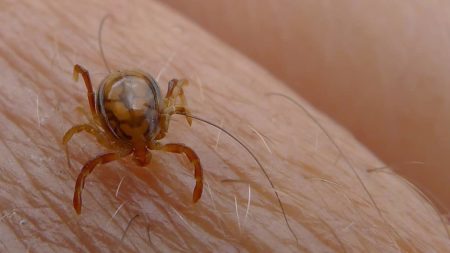
Bed fleas: what is it
This popular nickname was given to insects living next to a person whose blood is the main source of nutrition small parasites. The appearance of these pests causes a lot of inconvenience and poses a danger to the health of people and pets.
Fleas are small insects, the size of an adult does not exceed 3 mm. The scientific name of these parasites, translated from the ancient Greek language, means "pump" and "wingless". Linen fleas belong to the order of blood-sucking insects and cannot fly. But the lack of wings does not prevent them from moving rapidly.
The motor apparatus of these insects consists of 6 limbs, the hind ones are the most powerful, thanks to them fleas are distinguished by their jumping ability. Moving in this way, the parasites easily find their prey and attach to it with the help of bristles that cover the belly of the insect.
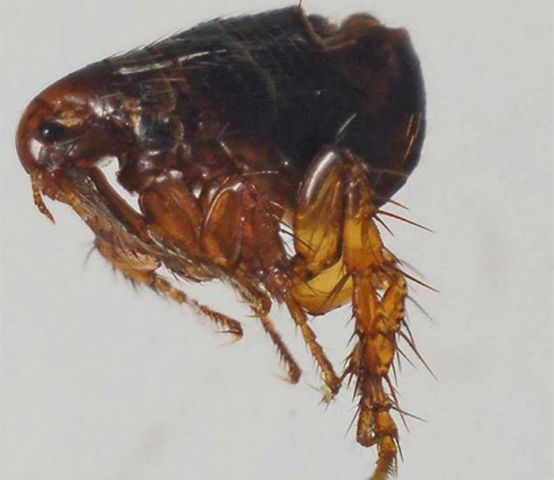

The powerful hind limbs of the flea allow it to make rapid jumps.
The flea's jump height can reach 50 cm, and the length - up to 1.5 meters. Small pests move quickly, it is almost impossible to catch them.
A little about bedbugs: photos, behavioral features, lifestyle
Bed bugs are perhaps the largest blood-sucking human parasites, still quite common in apartments to this day. The photo below shows several of these insects on the bed (usually such a picture can be observed at night, when you suddenly turn on the light):
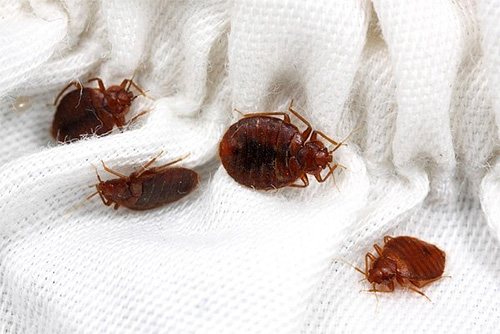

And in the next photo there is a nest of bedbugs in the couch. These insects prefer to hide as close as possible to human resting places:
Why are they dangerous
Allergy manifestations are characteristic of bites.
Feeding on the blood of humans and small animals, fleas leave painful wounds on the body that can be easily distinguished from the bites of other insects.
Petechiae appear on the skin - small hemorrhages. This redness with a dark dot in the middle is painful and itchy.
Flea bites cause allergic reactions, especially in children and people with sensitive skin.
The victims may have pulicosis or sarcopsillosis. These parasitic diseases cause swelling, pain, itching, and in severe cases, damage to the nervous system.
But the main danger from bed flea bites is the transmission of infectious diseases through the blood:
- hepatitis type B and C;
- bubonic plague;
- tularemia;
- typhoid;
- encephalitis;
- tuberculosis.
Fleas are able to reproduce rapidly, rapidly increasing their population indoors, so it is necessary to immediately respond to their appearance in order to prevent the consequences of the activity.
Features of the
They go out of hiding at night in order to bite people.Since parasites are almost invisible during the day, a person often begins to suspect their presence precisely after he has bites on his body.
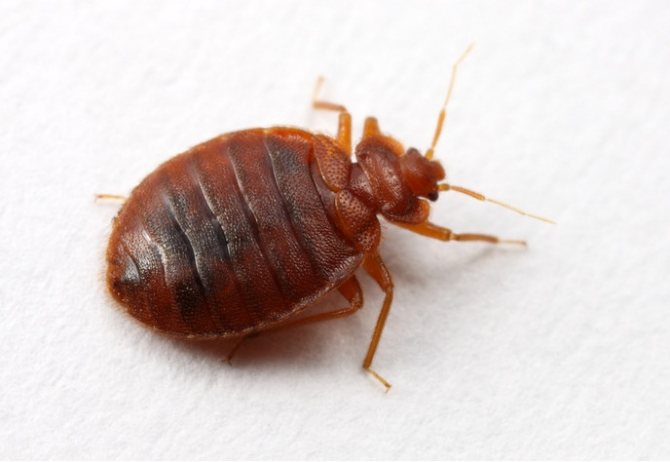

Bed bugs bite, most often, children and women, as their skin is thinner. They organize shelters not only in the bed, but also in the furniture that is located next to it - at the joints of the boards, in dressers with bed linen and towels, which are relatively rare to come off.
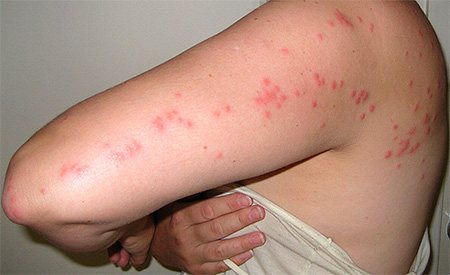

Bed bug bites
The ideal shelter for such a parasite is dark and relatively calm, close to the food supply, that is, to humans.
You can detect parasites by sharply shaking up bed linen and towels. You can find not only the parasites themselves, but also their chitinous shells left after molting. How they look is shown in the photo in the material.
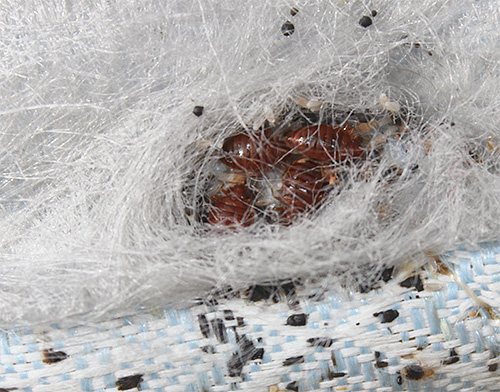

Bed bugs inside the mattress
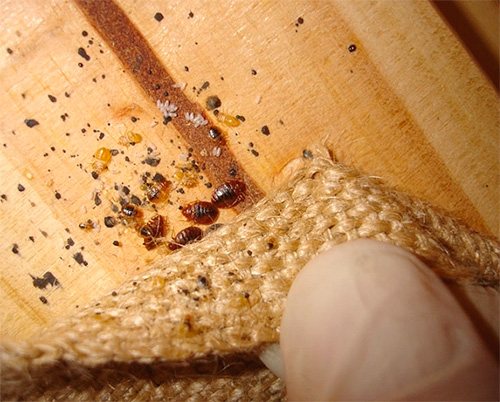

In addition to bed bugs, fleas can also live in bed. There may be 1-2 fleas on the animal, while the rest are in upholstered furniture and bedding. You can get rid of them in the same way as from bedbugs.
How to find them
Fleas can appear not only under poor sanitary conditions in the room. Many people wonder where these insects come from. Compliance with cleanliness does not always save you from the invasion of blood-sucking pests.
The following factors can contribute to the spread of parasites:
- uncleaned staircase;
- unclean neighbors;
- rats and mice living in the basement of buildings;
- dampness in the toilet room;
- pets.
Linen fleas do not live in beds or couches. They live in dark corners, trash cans, behind baseboards, on pet mats. Here fleas have a resting place, laying eggs and a refuge. Parasites climb into bed only in search of food.
You can find out about the appearance of fleas in a house or apartment by the characteristic bite marks, especially on the legs. Unlike other insects, fleas do not have an anesthetic enzyme in their saliva. Their bites are painful and itchy.
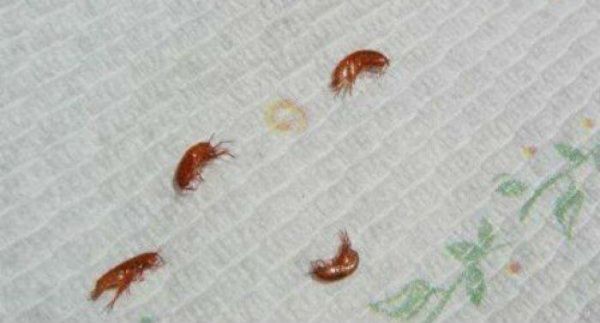

It is easy to find only dead fleas, for example, on the litter of an animal after it has been processed.
It will not be possible to see what fleas look like. These jumping parasites disappear at lightning speed. To make sure of their presence, you need to look in the house or apartment for traces of their vital activity. It is worth examining the bed carefully. Flea excrement may remain on the mattress in the form of fine black grains of sand. The appearance of pests in the room is evidenced by white hard balls, which can be found in dark corners, behind cabinets, near trash cans.
Linen lice
A louse can appear in the house completely unexpectedly. If earlier it was believed that they live in conditions of absolute unsanitary conditions, now the opinion has changed. For lice, the mess in the room does not play a special role, the main thing is the presence of food. Photos of bed lice are presented below.
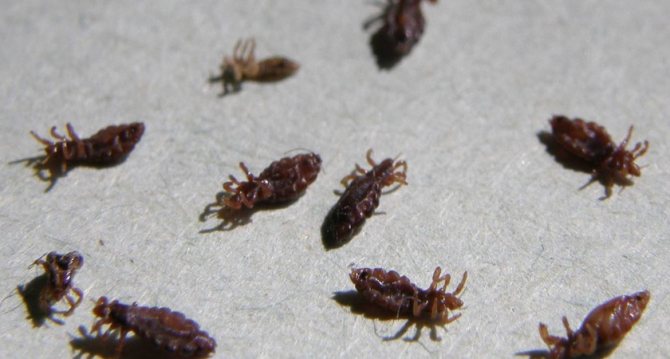

- Small gray insects prefer to settle in bedding, in a person's bed. In folds, seams, mattresses. The person himself brings blood-sucking parasites into his own apartment. The bed louse does not live on animals, and does not live on people. They can be infected by spending the night in a bed where there were lice. It can be a train, a hotel, a hotel, a rented apartment, or just an overnight stay. The louse crawls onto a person's clothes, hides, moves to his house, bed. The presence of one female in bed is enough for the apartment to be infested with lice in a month.
- Linen lice lay eggs-nits, hide them in bed - folds of bedding, in mattresses. They are so small that it is almost impossible to see them. But the first thing that a female louse does when she gets to a new place of residence is to lay eggs. They ripen within 20 days.At the end of the month, a person discovers numerous bites on the body, and it is impossible to stay in bed. Both adult lice and nymphs bite. For each stage of development, they need food, that is, human blood. It is also necessary to start the egg-laying process. That is why during this period a person discovers bites on the body, although before that the louse had already lived in his house, bed.
Lice bites are especially pronounced. A photo of the traces of a night feast of blood-sucking parasites is presented below.
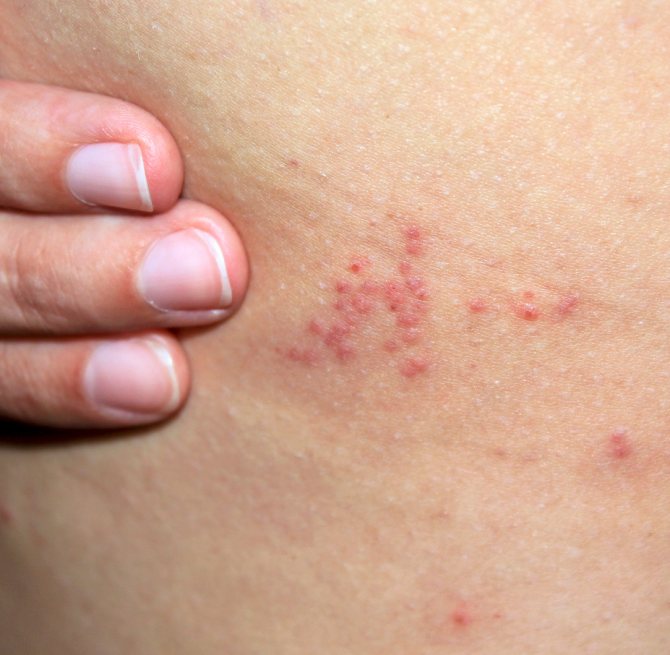

Insects bite in places where the blood vessels are located closer to the skin. Traces can be found on the arms, legs, back, neck, shoulders, and occasionally on the stomach. The linen louse does not crawl on the head, there is no point in looking for them there. This is how it differs from the head lice. Although the rest of the behavior, lifestyle, reproduction is identical.
It is unreasonable to count on the fact that the louse will disappear on its own. Starving her in her absence will not work. A louse can survive without blood for about a month. Then she goes into a new stage - suspended animation, waiting for favorable living conditions. Thus, the fight against linen lice should be carried out immediately after its detection. With a small stage of infection of an apartment, you can quickly deal with it. Tidy up the bed. Remove bedding, wash at temperatures above 65 degrees Celsius, or even better, boil.
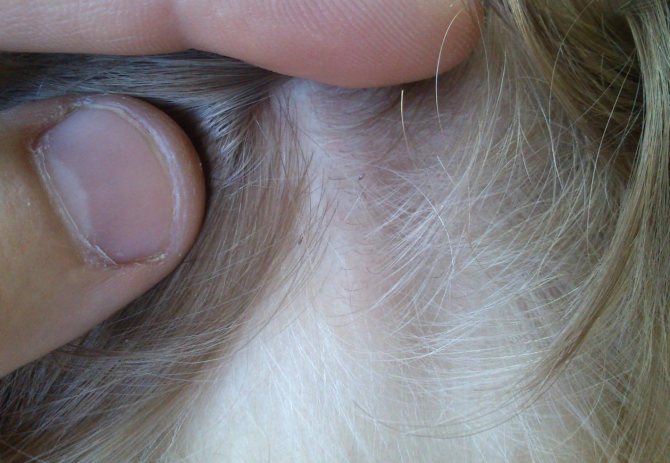

Then iron with steam
Particular attention should be paid to folds, seams. View the mattress - treat it with a spray, aerosol from blood-sucking parasites
Perform general cleaning of the house. When cleaning floors, add vinegar, detergent, ammonia. The mattress itself can be sprinkled with lavender essential oil, the bed frame can be treated with chalk Mashenka, wormwood and tansy can be placed under the bed. Sleeping linen should also be washed at high temperatures. In addition, pillows, mattress, blanket can be taken out in the cold in winter, or in the sun in summer. The louse is equally afraid of high temperatures and low temperatures. In addition to the bed, the louse does not settle anywhere.
[collapse]
Flea control chemicals
If blood-sucking parasites are found in the house, it is necessary to quickly begin to destroy them. The most common way to control insects is with special chemicals. But before using them, it is necessary to thoroughly clean and air the dwelling: inspect the wardrobe, wash it in hot water and iron the bed linen with an iron. Hanging out linen in winter in the cold will also help.
If you have pets, you must show them to your veterinarian. The doctor will select an effective and safe product (drops or shampoo) for them to remove fleas.
After completing these activities, you can proceed to the main stage of the fight - treating the apartment with insecticides. Modern chemicals will help you quickly rid your home of parasites.
"Cucaracha"
A potent product of domestic production. It contains melathion and cypermethrin. The drug is available in the form of a gel, powder and emulsion. When used correctly, it is harmless, has a low level of toxicity, is economical and affordable. The chemical has an unpleasant odor that can persist for a long time.
It cannot be used to treat children's bedrooms and hospital wards. The drug "Cucaracha" acts only on fleas and is harmless to their eggs.
"Ziper"
This insecticidal agent is intended for the control of insects closely associated with human habitation (bugs, fleas, cockroaches). "Tsiper" is used for sanitary treatment of residential and utility premises, public transport, waste accumulation. Affects all stages of insect development.
It has a long-lasting effect and retains its effectiveness under intense external influences (sunlight, rain).
The drug is safe for humans.
"Delta zone"
A modern insecticide with a good effect on parasites, practically odorless.
This gives Delta Zone an advantage over other home treatment products. The active ingredient is deltamethrin, which causes paralysis in parasites.
One 50 ml bottle is enough to process a small one-room apartment.
The "Delta Zone" is safe for humans. Even if accidentally ingested, it quickly breaks down and is excreted from the body.
"Tsifox"
A strong acaricidal-insecticidal agent. The main substance - cypermethrin (25%) has a paralyzing effect on insects, which die 20-30 minutes after contact with the drug.
The Tsifox solution is used to disinfect not only houses and apartments, but also summer cottages. Subject to safety measures, the product can be used independently, but it is mainly used by pest control specialists.
The product is safe for animals.
"Combat"
This insecticide is produced as a spray, gel and trap. It contains cyphenothrin and imiprotrin.
These substances paralyze the nervous system of the parasites, which leads to their death. "Kombat" is minimally toxic, it can handle even clothes and linen. After the first harvest, the insects die.
The drug is safe for humans and pets.
Despite its effectiveness, it has several disadvantages:
- smells unpleasant;
- harmless to parasite eggs;
- removed by wet cleaning;
- high price.
To treat the premises with the "Combat" agent, you must stock up on a respirator, gloves and a protective suit.
"Raid"
One of the most commonly used parasite control agents. It is produced in the form of an aerosol and has a nerve-paralytic effect. Both the adult and its larva perish from the "Raid", but the drug does not immediately affect the eggs of the pests, so a repetition of the disinfestation procedure with an aerosol is required.
The tool should be used to treat furniture sets, beds, carpets, floors, baseboards, walls, all cracks and holes. During the procedure, all windows and doors must be closed.
After disinsection, it is necessary to ventilate the room for at least 3 hours. The effect of the "Raid" lasts for a month.
Mites
They are arachnids and are very small in size. They can be viewed exclusively under a microscope. Outwardly, they resemble crabs.
Characteristics
The body of an insect is less than half a millimeter in size, covered with a chitinous membrane. It is very difficult to get rid of it, since it is very firmly attached to the surface. This is possible due to the legs, at the end of which there are suction cups. The main places of localization are mattress, carpet, feather bed and pillow. The tick feeds on human sweat, small particles of skin and dandruff.
You can pick up a tick in a transport or a hairdresser. They are also often brought by children from kindergartens. They attack animals while walking. Mites settle on their fur and enter the house.
Symptoms
The tick does not bite and does not leave traces. Danger to humans is carried by waste products, which they release several dozen times a day. He inhales some of them along with the air, the rest accumulate on the skin. As a result of contact with excrement, the following symptoms arise:
- headaches,
- scabies,
- sore throat,
- an allergic rash,
- bronchial asthma,
- dermatitis,
- cough.
If such signs occur, symptomatic treatment should be started. Getting rid of the parasite is an important step.
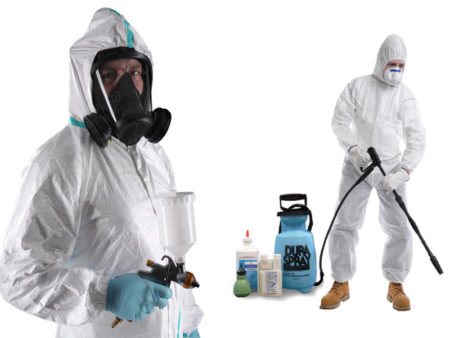

Prophylaxis
The mite is a very common insect. Therefore, it is important to know the basic preventive measures that will avoid the problem. It should be noted that the parasite does not tolerate dry air and the absence of dust.For prevention purposes, it is worth following these rules:
- change bed every week,
- use disinfectants when cleaning,
- iron all things well,
- it is better to replace old feather pillows with new counterparts with modern padding,
- wet cleaning should be done often near the bed,
- periodically wash carpets,
- vacuuming furniture regularly,
- ventilate rooms as often as possible,
- bedding is recommended to be taken out into the street,
- to decorate the premises, use bouquets of wormwood and tansy, the smell of which repels pests.
Compliance with these simple rules will prevent insects from staying in the house. This applies not only to ticks, but also to other insects that can disrupt the comfortable living of all family members. In addition, do not forget about the methods of dealing with them.
Folk remedies for bed fleas
In addition to specialized chemicals for complex action on pests, folk remedies are widely used. Fleas have a peculiarity - they do not tolerate pungent odors. Taking advantage of this weakness of insects, they can quickly survive from their home and protect themselves and pets from the invasion of parasites for a long time.


Strong smells will help get rid of insects.
Wormwood tincture
This plant takes root almost everywhere. Among its 400 varieties, only bitter wormwood is the most common and useful herb. It is an excellent remedy for domestic parasites. Wormwood has a specific smell and is used to repel fleas. Insects are afraid of her and quickly leave places where a bitter smell is felt.
A fresh plant must be spread out in the favorite corners of the pest's habitat: under the carpet, behind the sofa, bed, closet, near the baseboards.
To protect pets, wormwood is hidden in their beds and bedding, hung in cages.
The plants use tincture to wipe the floors, especially near the front door, in the corners. Wormwood broth can be sprayed indoors.
Sprigs of needles
The smell of pine needles in the house creates not only a festive mood. With the help of thorny twigs, you can protect yourself from bed fleas. Pine needles and cones with their aroma will scare off parasites for a long time. Using sawdust, they are laid out in the corners and on the bedding of pets.
A decoction should be made from coniferous branches and sprayed in living rooms. The needles are poured into fabric bags and hung around the apartment.
Citrus
The bright, strong smell of citrus fruits scares off blood-sucking parasites. Fragrant peel of lemons, oranges, limes, grapefruit will help get rid of harmful insects. Dried crusts are laid out in places of possible habitat of fleas: behind furniture, near baseboards, behind cabinets and bedside tables.
It is necessary to use citrus fruits carefully if there are cats in the house. Their sense of smell may be impaired from the pungent smell of the fragrant peel.
Essential oils
These products have a strong odor due to the volatile substances that are part of their composition. Essential oils are an effective natural insecticide. They do not destroy insects, but scare away from places where pests live.


Essential oils repel fleas through their pungent scent.
Bed fleas do not tolerate the smell of the following oils:
- tansy;
- peppermint;
- lemongrass;
- thyme;
- wormwood;
- tea tree;
- pine trees;
- anise.
Essential oils are used only for indoor flea control. These fragrances cannot be used on pets. They can lick the oil off the coat and be poisoned.
To prepare a solution for treating a room, a few drops of the agent are added to water and sprayed. Caution is advised for people with asthma and allergies.
Tar soap
Tar is a natural antiseptic that helps fight disease-causing bacteria and fungi. Phenol, which is part of birch tar, is toxic to the nervous system of blood-sucking parasites.
Pet hair is treated with tar soap. The floors are washed with soapy water, especially in hard-to-reach places. Thanks to its antiseptic effect, tar soap not only gets rid of fleas, but also promotes the speedy healing of bites.
Video
Absolutely any person can become infected with parasites. Even children are no exception. To get rid of these helminths, you need to take a course of medications. They must be prescribed by the attending physician. Before that, a consultation is carried out, and the necessary tests are charged. For the treatment to be successful, the following medications must be used: basic drugs, immunomodulators, vitamins, probiotics, sorbents, and others.
Medicines for worms can have a destructive effect not only on the body of worms, but also on the person himself. Therefore, an infectious disease specialist must supervise the treatment.
During the appointment, it is important to tell him about all the side effects. He will suggest alternative treatments and will most likely suggest stopping these medications.
During the removal of worms, you can use folk remedies. They will help you heal faster and achieve the desired result. The main thing is to observe the measure and dose during admission.
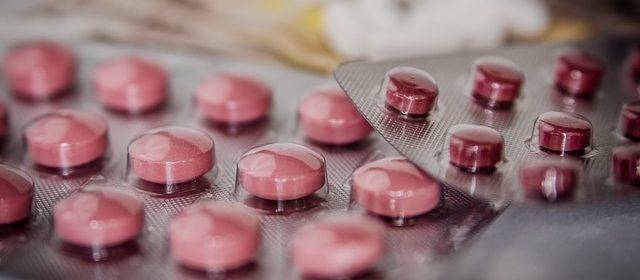

Antiparasitic drugs can cause a variety of reactions in humans, since they contain very toxic components. For this reason, an effective remedy in each specific case is determined not on the basis of the manufacturer's advertising, but taking into account the age category, the patient's weight and the state of his body (chronic diseases, inflammatory processes, acute conditions). An alternative solution is herbal preparations against parasites. They contain safe natural toxins that harm worms more than humans.
Room processing
To clean the room from blood-sucking pests, it is necessary to carry out a general cleaning in the room. Carpets and furniture should be removed from walls and floors and thoroughly cleaned. Collect and discard all trash.
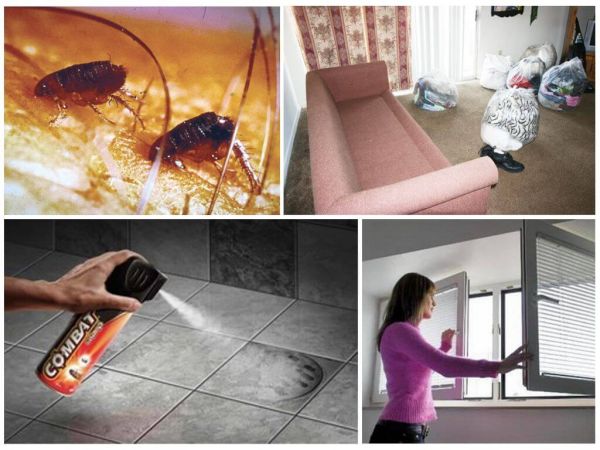

Processing is carried out after general cleaning of the premises.
Treat the room with chemicals, especially at the joints of the floor and baseboards, near furniture. Close the room for 2-3 hours for the drugs to take effect. After disinfestation, thoroughly ventilate the room.
What conditions are unsafe for helminths
To destroy the eggs of worms that have fallen on household items, you should know what living conditions for parasites will be unbearable:
- the eggs of many types of parasites cannot remain viable when the temperature rises above fifty-five degrees; for an hour under such conditions, the parasites die;
- upon contact with hot water, the temperature of which is above seventy degrees, the worms die within a couple of seconds;
- low humidity is unsuitable for many representatives;
- at a humidity of up to sixty percent and a temperature of up to forty degrees, human helminth eggs die in a few days.
To read
About the suspension from worms for children
At low temperatures, parasites also cannot maintain their viability. For an hour at temperatures below fifteen degrees, almost one hundred percent of the parasites die. At sub-zero temperatures, it is possible to achieve complete destruction of eggs. For this, toys, carpets and things are taken out into the cold. If possible, things are put in boxes and put out in the cold for freezing. If it is not possible to freeze things, you should iron everything that is possible with a hot iron. This ensures the death of pinworm and roundworm eggs completely. After quartzing the room for half an hour and then airing the room, it is possible to get rid of the threat of re-infection through eggs left on household items.
Tips for choosing a disinfection service
The most reliable method of getting rid of bed fleas is the help of a professional disinfection service.
Specialists will quickly deal with parasites. This will save time and eliminate the need for contact with insecticides.
When choosing a disinfection service, you should pay attention to:
- The drugs used by the organization must be safe for humans and animals.
- The time of the procedure is chosen by the customer, not the company.
- The service provides clients with a detailed explanation of the disinfection process, the chemicals used, and safety measures.
- Conscientious organizations work without prepayment.
- If the cleaning was unsuccessful, the customer does not pay for this event.
Services whose employees care about their reputation provide quality services, after which they receive only positive reviews.
Signs of helminthiasis
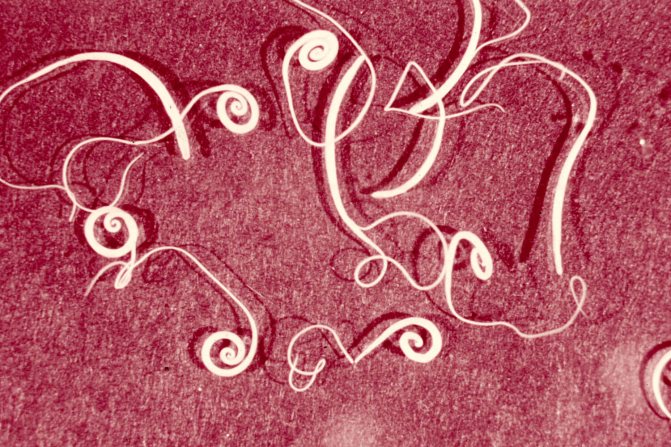

The appearance of worms
At first, a person does not notice that he is infected with helminths. After a while, you can detect the presence of parasites by the following signs:
- itching appears in the area of the anus, in women, itching is very often manifested in the genital area;
- the frequency and quality of bowel movements changes, the patient is disturbed by false urge to defecate, and the stool becomes poorly shaped, with impurities of mucus;
- with extensive settlement, a person's well-being worsens significantly: chronic fatigue, sleep problems, nervousness and irritability are noted;
- in women, inflammatory diseases of the genital organs may appear, as parasites crawl into the vaginal cavity;
- babies react to the presence of parasites with changes in behavior, whims are noted, the impossibility of concentration, with a particularly severe course of the disease, the child begins to lag behind in development;
- in rare cases, the presence of parasites can provoke an attack of appendicitis;
- inflammation in the anus can lead to dermatitis or eczema.
Given the severity and danger of infection, it is necessary to get rid of parasites as quickly as possible.

